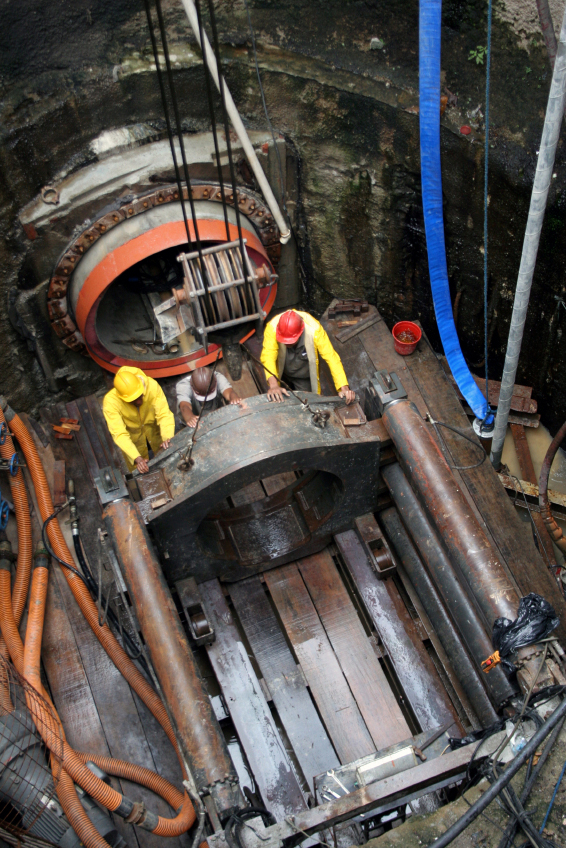Sandhogs and Mesothelioma
Mesothelioma Bores into Sandhogs Like Steel Bits into Silt
You are an urban miner. You carve out the underground passageways for city transit system, water delivery network, sewers and more.
You risk your life every time you go below. Unfortunately, the risk follows you when you come back up and go home at the end of your shift.
The risk flows from the mineral asbestos. Chances are very good you’ve been exposed to it. If so, your risk of developing mesothelioma is moderate to high.
Sources of asbestos exposure underground include:
- Mineral deposits
- Construction materials
- Heavy equipment components
Asbestos is likely to be all around you as you work.
Geologically, many cities across the U.S. have naturally occurring deposits of asbestos. As you and your fellow sandhogs bore through the earth, you may reach spots where asbestos is buried.
Dig into those spots with a dry blade or tool and asbestos can be released into the air.
Asbestos Exposure Happens in Other Ways, Too
Before your current project can move forward, materials from previous projects must be removed. If those materials contain asbestos, the mineral will probably be released into the air during removal.
It once was common for construction materials such as brick, plaster, concrete pipes and ducting to feature asbestos.
Makers of these materials added asbestos to make them sturdier, longer lasting and lighter weight. Mainly they added asbestos so that the finished materials wouldn’t combust or conduct high heat.
The asbestos contained by these materials poses no threat to you as long as the materials are not decaying or in any way disturbed by hammer blows, power-saw cuts or drill penetrations.
Heavy equipment is another source of asbestos exposure.
Tunneling machinery and earth-removal vehicles may have a number of parts or systems that make use of asbestos. Brakes, gaskets and heat shields are a few examples.
If these asbestos-containing components need to be repaired or replaced on the job site, particles of the mineral are very likely to be released into the air.
No matter the source, what makes any release of asbestos especially bad for sandhogs is that it occurs underground, in confined spaces. This prevents dispersal of those airborne particles.
So, if you breathe them, you’re almost assured of getting a concentrated dose.
When asbestos gets into your lungs, it’s permanent. The harm doesn’t immediately show up, though.
It occurs unnoticed over the span of decades. The process is not well understood, but asbestos turns healthy cells on the lining of your lung into cancerous ones.
It will do the same thing to the cells lining your abdomen if you have the misfortune to swallow asbestos instead of inhaling it.
What Your Union Thinks of Asbestos
The Laborers’ International Union of North America (LIUNA) knows that asbestos represents a grave danger to sandhogs.
That’s why LIUNA offers help to members who want to take action against the mineral in whatever form it might be encountered.
One LIUNA response has been to provide instruction in how to recognize and monitor an asbestos threat and how to be safe around it. Contact the union for further details.
Meanwhile, sandhogs are advised to regularly see a doctor. You’re probably already doing that because of your concerns about silicosis.
But it would be an excellent idea to do so as well for mesothelioma. Regular checkups can put you ahead of the game if and when the disease chooses to strike.
Early detection permits early treatment. Early treatment improves survival expectancy.

